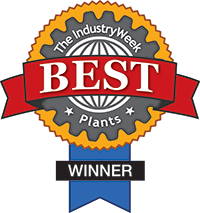When looking to make a tube fitting supplier change there are numerous things to consider. Safety, Performance and Supplier reliability should be at the top of your considerations when selecting a new supplier.
Safety:
Safety should always be at the top of the list. Is the suppliers design compatible with your current in house design? Are the installation instructions the same for all shapes, sizes and materials? Do they offer no cost safety installation course and is it hands on? Are installation tools and aids readily available for purchase, lease or use? Does the new supplier have a track record in production of producing quality components? Do they bench mark quality to six sigma measurement or equivalent measurement? If so what is their DPMO (Defects Per Million Opportunities) in total and by product? What is their internal manufacturing plant safety track record? What is their policy on interchange and intermix? Is interchange/intermix covered in the suppliers insurance liability?
All the above should be a part of your new supplier safety evaluation as well as any other internal requirements to be met that the organization has. First and foremost, safety bears with the user in proper selection and installation. Installation errors are the number one cause of safety incidents with tube fittings. It is important that the when looking to change mitigating installation risks/errors are the most important factor. In the world of instrumentation grade tube fittings there are three prominent designs:
- Generic Wedge Shaped
- Two Ferrule, Single Ferrule
- Controlled Ferrule Drive Design.
It is important to note that installation instructions and interchange/intermix acceptable criteria are different between designs. Thus, selecting a new supplier that produces the same design will help minimize the risks brought about from changes in installation instructions and what is acceptable and not acceptable when it comes to interchange and intermix. Installation aids and ready available tooling to help in assembly should also be considered when making a change, SSP Installation Aids and Tooling. Managing the deskilling of the work forces is also a challenge due to skilled labor retiring or leaving. Importance should be placed in the area of training for the installers and the quality of training. SSP Site Training Internal published plant safety record of the manufacturer is a great indication on how focused the organization is on safety.
Quality of manufacturing is the second most important aspect of the assessment relative to safety. A quality manufacturer/supplier should be proud to discuss, show and have you review their quality track record of manufacturing. The best of the best bench mark their quality and measure in a six sigma measurement of Defects Per Million Opportunities. Their willingness to share those records tracked on a month over month basis in total and by product line produced is and will be an indication of how focused they are on making sure the fittings and valves they provide will perform as said. SSP Quality Performance.
Performance:
Products always work on power point, sales demo’s and presentations. The rubber hits the road on performance in a critical installation at a plant or when trying to ship a product out the door while going through FAT or final quality check. Factory in house testing is important as well as third party tested to standards as if not more important. SSP Test Reports Does supplier have a in plant lab where all product designs are routinely tested and are those test reports available? What third part industry standard testing has been done and what is applicable for my application? Does the supplier have testimonials and references that are applicable to my industry? Request a testimonial. Another consideration is how the manufacturer responds when there is a problem. Do they track return request or RMA response times? When it is an internal manufacturing error? Is there a root cause and corrective action report?. The top tier suppliers of the world all make products that work, the difference is how they respond and support when there is an issue or problem. Located afar in a distant continent or multiply layers of business units to go through to get to the right resources to help all are considerations to make when selecting a supplier.
Supplier Reliability:
Supplier reliability can be boiled down to delivery, response time and support. Delivery/Lead Time is important as well as the supplier meeting commitments relative to on time performance. Does the supplier openly report its on time to commitment performance? Do they measure to your requirement need or to the manufacturer’s ability to produce? Does supplier published lead times meet our manufacturing schedule or plant maintenance need?
Your SSP distributor is the right choice -- especially if you are frustrated with your current supplier's missed promises, slow response time, and inability to work on special application challenges. Local stock, knowledgeable technical experts, and the ability to provide troubleshooting and installer training are all things you can expect from an SSP authorized distributor.


